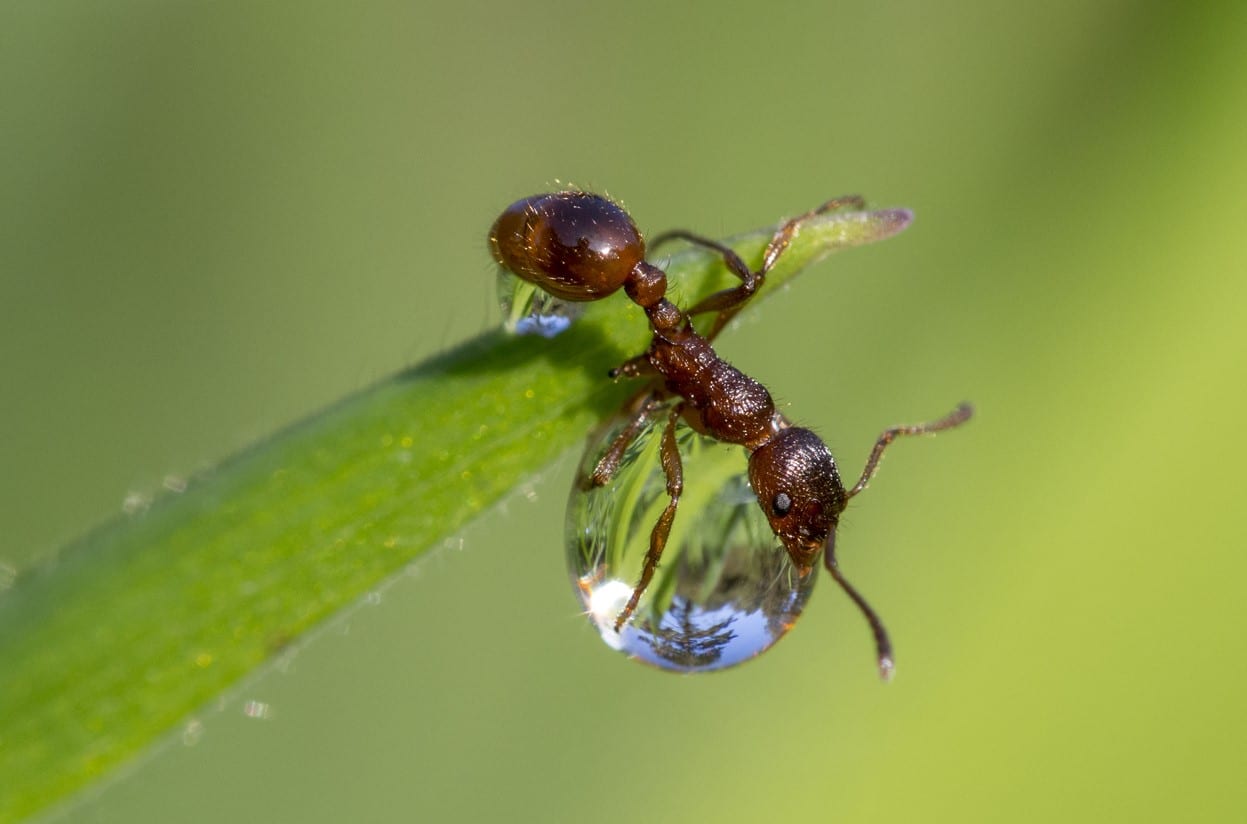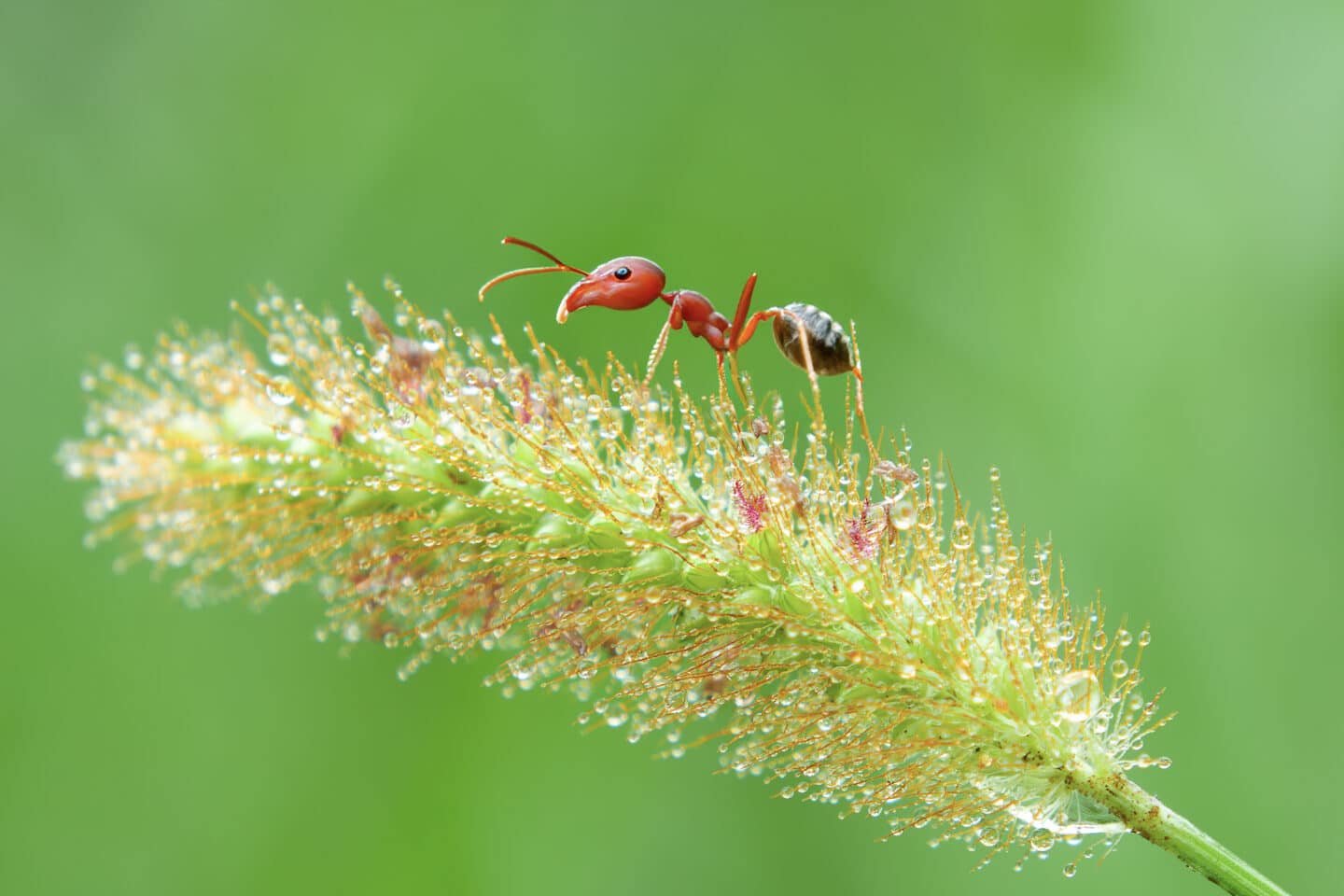Author: Kurt Treftz, Cascade Pest Control

When you think “fire ant”, you might think swarming, stinging insects from the south, but perhaps surprisingly, the fire ant threat to the Pacific Northwest seems to hail from across the pond. European Fire Ants are an invasive species that is gaining a foothold in British Columbia and have been found in the Seattle, WA area.
Knowing how to identify these pests is the first step to containing them.
Appearance of European Fire Ants
- ¼ inch for the workers and almost ½ inch for the European Fire Ant queen.
- Reddish color
- Constricted waist with two segments (rather than the more common one segment of most native ants)
- The middle body section has two spines that point backward
- The head and thorax have ridges and grooves with a dull sheen
- The abdomen is shiny
Threat of European Fire Ants
The aggressive European Fire Ant can deliver a painful “bite” or sting with a temporary burning sensation. They can sting repeatedly and if a nest is disturbed they will swarm to protect the nest.
Often a fire ant nest will be unknowingly disturbed and bites can occur. In addition, there are often workers foraging around the nest and in surrounding foliage so unsuspecting victims can brush up against these nests and get stung.
Most of the time the stinging will resolve fairly quickly; however, sometimes the sting causes an allergic reaction from hives to a severe anaphylactic response.
European Fire Ants also pose a threat to the native ecology where they invade. They have been known to completely displace native ant species. They also prefer sweets and, as they forage on flowers and nectars, disrupt local pollinators. Because they protect aphids and other honey-dew creators, they increase the population of insects feeding on plants.
Life Cycle of European Fire Ants
Colonies
European Fire Ants (EFA) create large, dense colonies with more than one queen (polygyny) and more than one nest (polydomy). In their native range, EFA move frequently throughout the summer months. In new invaded areas, their habits are less well known and they seem to spread mostly by unintentional dispersal of infested soil by humans.
Reproduction
European Fire Ants reproduce quickly with multiple queens. From egg hatch to egg production, it takes about two years for a new colony to start. They often form densely populated nests. In their native ranges, they produce new colonies by “budding” (a queen and a few workers break off to form a new nest) and by nuptial flights. There is less known about how they reproduce in non-native areas but there doesn’t seem to be a nuptial flight of EFA in North America.
Food
These ants are sugar-loving ants, so they are attracted to sweets. Flowers and nectar-producing plants are very appealing to EFAs. They are also attracted to human habitations. Ornamental flowers, fruit trees, and foodstuffs from humans can all lead to attracting these fire ants. In addition, insects like aphids that produce honey-dew create a symbiotic relationship.
Habitat of European Fire Ants

European Fire Ants build their nest in moist soil with areas of high humidity, like wetlands. They don’t create mounds like other ants, which can make it extremely difficult to spot their nests.
These ants often live alongside humans under stones & bricks, fallen trees & roots, yard debris, and in potted plants. They actually seem to thrive on urban cover and human interaction. (And appear to be spread by human interaction).
They like shaded spots and camouflage their nests with their surroundings. This makes them difficult to locate until some unsuspecting passerby stumbles upon them. With European Fire Ants high populations and aggressive nature, they are a growing threat.
If you are in the Seattle region and think you are seeing European Fire Ants in or around your home or business, Cascade Pest Control ant experts can help! Call 888-989-8979 today!
